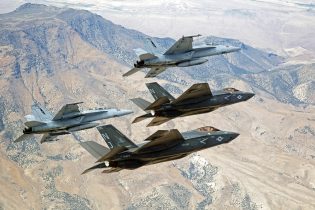
OAN Newsroom
UPDATED 10:44 AM PT — Thursday, Dec. 13, 2018
Mission capable readiness continues to be a thorn in the side of the military. The leaders of the Marine Corps and Navy appeared before Senate lawmakers on Wednesday. They explained that while readiness levels are improving, there is still much work to be done.
At this point the military is expected to fall short of Defense Secretary James Mattis’ goal for next year of hitting 80-percent aircraft readiness levels. Most models currently stand at around a 60-percent mission capable rate.
The Government Accountability Office broke down the reasons as to why this is into three main categories — problems with aging aircraft, maintenance and supply shortages.
“In both the Marine Corps and the Navy, aviation units are facing maintenance and personnel challenges. Out work has found Navy and Marine Corps aircraft are aging and maintaining them is both expensive and time consuming. Getting the supplies needed to keep these fleets in the air, is also difficult. Additionally, we have found that pilot and maintenance personnel shortfalls also make it hard to keep these older aircraft running.” — Gen. Robert Neller, Marine Corps CommandantIn this Sept. 3, 2015, photo released by the U.S. Navy, F-35C Lightning IIs, attached to the Grim Reapers of Strike Fighter Squadron (VFA) 101, and an F/A-18E/F Super Hornets attached to the Naval Aviation Warfighter Development Center (NAWDC) fly over Naval Air Station Fallon’s (NASF) Range Training Complex near Fallon, Nev. (Lt. Cmdr. Darin Russell/U.S. Navy via AP)
Even the F-35 program, which is touted as the future of military aviation, has been plagued by high costs and its own slew of maintenance problems. For example, the entire fleet was grounded back in October after a crash sparked concern over a possible issue with engine fuel tubes. Later that same month, about two dozen F-35’s were grounded for a second time after aging fuel tubes once again began causing problems.
In order to correct these issues, the Government Accountability Office released a list of 45 open recommendations alongside its report Wednesday.
This includes holding contractors accountable for aircraft performance and opening up the line of communication between departments to oversee tasks.